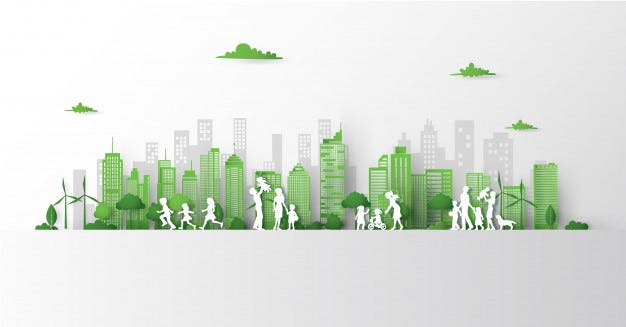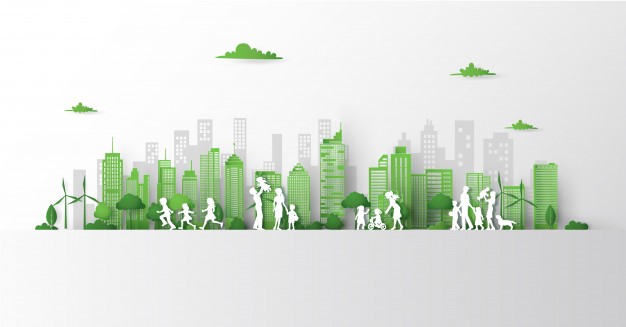
Back to Normal?
Cities Say, ‘No Thanks’
Just a few months ago, cities around the world were grappling with traffic and transit congestion that appeared to be out of control. New mobility options like ridesharing, e-scooters, and bikeshares took cities by surprise and flooded already crowded urban centers with more vehicles. London implemented a congestion tax to discourage driving in the city center; New York approved a similar plan that is now pending implementation.
Then COVID-19 struck, and city streets were suddenly empty. While many people are pining for the day when we can get ‘back to normal,’ some municipal governments have no intention to do so, at least not in the area of transportation and congestion. Many cities have converted downtown streets to pedestrian-and cycle-only zones to allow people to move with appropriate social distance. Now they want to keep the change.
Better, Healthier Cities
According to the Brookings Institute, mayors around the world “are determined to reduce their cities’ vulnerabilities, and not just as they relate to COVID-19: they see a chance to build a healthier, more sustainable future that improves their cities’ resilience to a wide range of shocks and shifts.” In Paris, mayorAnne Hidalgo said, “I say in all firmness that it is out of the question that we allow ourselves to be invaded by cars, and by pollution.”
This suggests that cities have learned a lesson from letting tech companies take the lead in designing and delivering mobility, decimating public transit in the process. But public transportation is not likely to return to normal either. Lessons from automated, on-demand services, like ridehailing, may play a key role in making urban transportation smarter and safer, and in helping cities retain the reduced congestion and pollution achieved under shelter in place orders.
The Return of the Car?
Some worry that fear of infection in crowded buses and trains will lead people to return to their private cars. The data on public health and transportation shows no clear winner. On one hand, passengers on mass transit have been shown to be six times more likely to get seasonal flu. On the other hand, every extra hour spent in a car increases one’s risk of obesity by six percent. Overall, walkable, dense neighborhoods with shops to meet daily needs, and access to public transportation, translate into lower rates of diabetes, heart disease, and stress, as well as with reduced health-care costs.
And then there is the question of how many people will be commuting. Global Workforce Analytics estimates that 25 to 30 percent of the workforce will work remotely multiple days per week by 2022, which will likely mean a corresponding drop in use of all forms of mobility. Lower demand might frighten public officials already running with tight budgets, but the opportunity exists to right-size services in ways that make them safer and more efficient.
Supply and Demand
New models of shared mobility that were emerging before the pandemic are getting a shot in the arm as we look at what’s next. The ability to balance supply and demand; that is, getting the right fleet size and vehicle locations to have just the right service capacity, can reverse the ‘Uber effect,’in which city streets are saturated with often-empty vehicles and worsening traffic.
Fleet orchestration platforms that match vehicles and passengers, and automate booking, dispatching, and routing to maximize fleet efficiency arose to enable mobility providers to move more people with fewer vehicles. App-based booking allows these platforms to match passengers with vehicles based on multiple constraints: ride time, wait time, future demand, and, what’s relevant here, vehicle capacity. In other words, a vehicle operator can set a capacity threshold which allows a safe and socially-distanced number of passengers to be transported in their vehicle. Once the vehicle has reached that threshold of passengers, it becomes unavailable for new passengers to book on the app, until someone has been dropped off.
Smaller, more nimble fleets can move people around cities, and larger vehicles like trains and buses can be used for longer haul trips. Both can use pre-booking to control how many people are allowed on board, and frequencies and fleet sizes can be adjusted as demand changes. Booking data can also be used to synchronize long-haul and short-haul modes for more efficient journeys. An operator can automatically send more vehicles to meet trains that are at full capacity, for example, and fewer to meet less crowded arrivals.
A Change for the Better
The pandemic has fundamentally changed our perception of how we can live, work, and move. We’ve figured out how to get goods and services without jumping in the car. We’ve learned that all sorts of jobs can be done from home offices. And we’ve learned that people like, and want, to walk and bike as part of their daily journey. Cleaner air, quieter neighborhoods, and healthier residents can be among the positive outcomes of the crisis for cities that were on their heels with traffic and congestion before. Smarter mobility can help retain these benefits.
To learn more about fleet orchestration and new mobility models, visit bestmile.com.
This article was originally published on https://meetingoftheminds.org/
Transformation of traffic during the pandemic was originally published in Bestmile on Medium, where people are continuing the conversation by highlighting and responding to this story.
